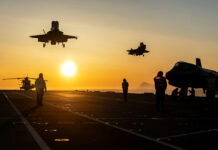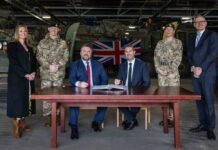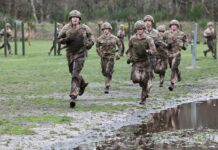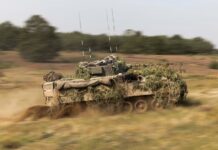UK procurement for its heavier armoured formations has not been a happy experience in recent decades, but the British Army now has a plan – another one – intended to deliver the land-based fighting capability it requires.
On 9 March 2021 a UK House of Commons Defence Committee (HCDC) report was published that focused on the British Army’s armoured vehicle capability. It did not make pleasant reading.
“The recent history of the British Army’s armoured fighting vehicle (AFV) capability is deplorable,” the report stated in its opening summary. “Since the end of the Cold War in the late 1980s, the army’s AFV fleets have been characterised by increasing obsolescence and decreasing numbers. In 1990 the UK had around 1,200 main battle tanks in its inventory, today has 227, and those that remain are in urgent need of modernisation.”
The HCDC report added, “We are astonished that between 1997 and late 2020 (with the exception of a small number of armoured engineering and Viking protected mobility vehicles) the Department has not delivered a single new armoured vehicle from the core procurement programme into operational service with the army.”
While it would be easy to blame a broken procurement system within the UK Ministry of Defence (MoD) – and, like the HCDC, many have – it should also be remembered that UK land systems procurement over the last 30-plus years has been pulled from pillar to post by the constantly changing nature of land warfare faced by the British Army.
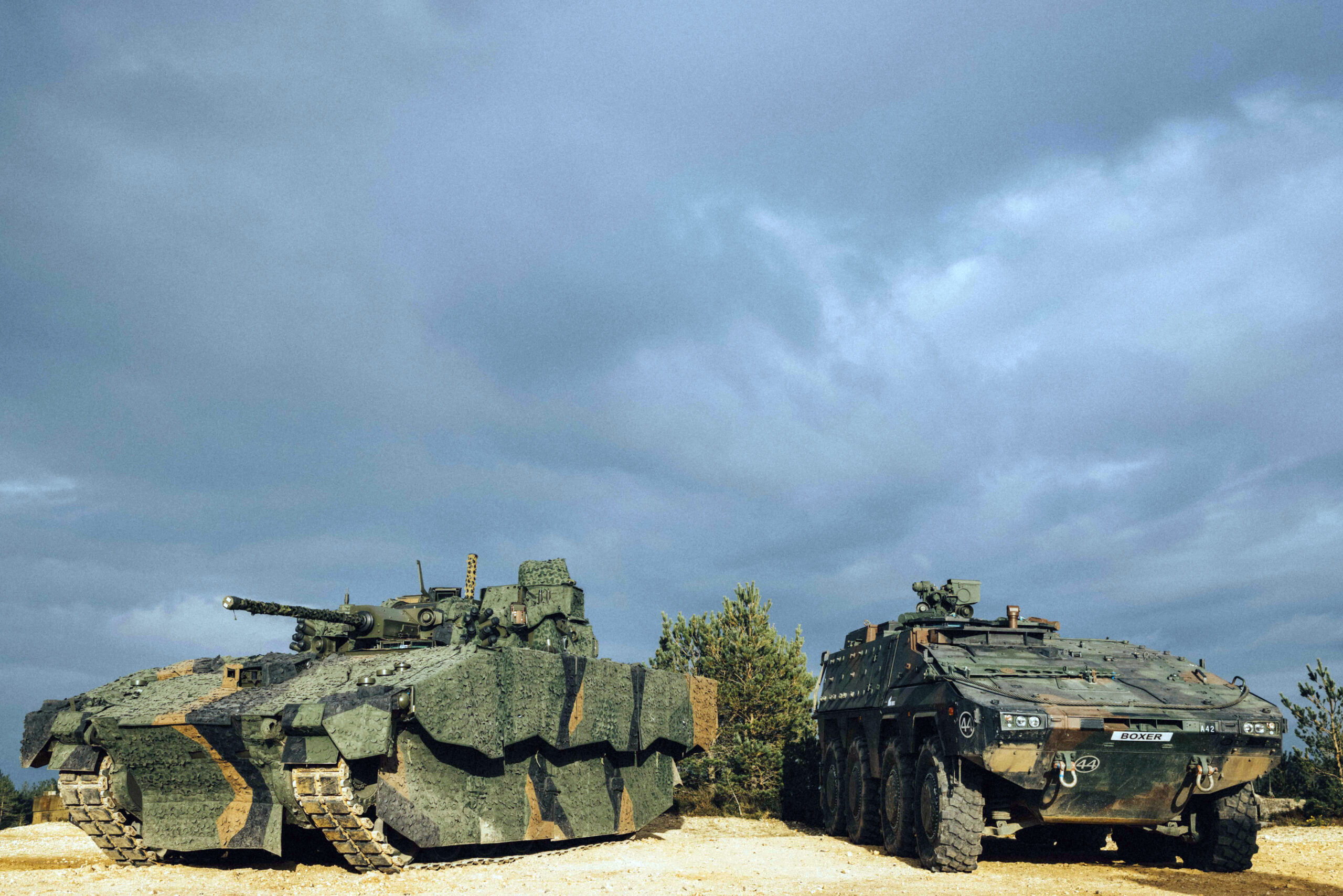
Credit: Crown Copyright
The peace dividend
Just prior to the end of the Cold War, the British Army fielded four armoured divisions and more than 6,200 armoured vehicles. At its heavier end, according to the 1998/89 edition of the IISS’ The Military Balance, the army’s combat fleet included around 300 Challenger 1 and 870 Chieftain main battle tanks (MBTs), 1,061 variants of the Combat Vehicle Reconnaissance (Tracked) (CVR(T)) family and 150 Warrior infantry fighting vehicles (IFVs), of which 789 were ultimately received between 1987 and 1995.
At the end of the 1980s the British Army’s Future Family of Light Armoured Vehicles (FFLAV) study sought to inform what should replace the CVR(T) family and other vehicles such as the tracked FV432 armoured personnel carrier. This led to two initiatives – the Tactical Reconnaissance Armoured Combat Equipment Requirement (TRACER) and a project to deliver a Multi Role Armoured Vehicle (MRAV) – that showed promise but ultimately went nowhere before being cancelled.
However, by the early 1990s the UK government, along with other NATO nations, was looking to deliver a post-Cold War ‘peace dividend’ – meaning sizeable cuts in military spending – as reflected in its 1990 ‘Options for Change’ initiative.
Following this, and in light of the army’s engagement in the Bosnian War from 1992 to 1995, it was determined that light/medium-weight armour, which could readily be deployed from C-130 transport aircraft to conduct ‘international police actions’, was what the army required. A requirement for a fleet of AFVs to fulfil such an expeditionary role was then encapsulated within the UK’s 1997 Strategic Defence Review.
Emerging from this mindset came the ill-fated Future Rapid Effect System (FRES) programme, which came to epitomise the combination of deficient procurement and adverse circumstance that blew the British Army’s AFV plans so far off course.
FRES
Work on the FRES requirement was initiated in 2001 when what was then Alvis Vickers was commissioned by the UK MoD to carry out concept work. However, by the time the MoD had announced a two-year Initial Assessment Phase (IAP) for the FRES programme in 2004, the British Army was already facing adversity on battlefields that looked nothing like the Balkans. As the counter-insurgency campaigns in Afghanistan and Iraq increasingly presented the improvised explosive device (IED) as the single greatest threat to British service personnel, the classic ‘iron triangle’ of AFV design – the balance between firepower, protection and mobility – swung away from mobility in favour of protection; the notion of deploying armoured vehicles from a C-130 was exposed as a pipe dream.
The FRES programme was originally expected to deliver 3,000 AFVs in 16 different roles, essentially split into two main types, the wheeled Utility Variant (UV) and tracked Specialist Variant (SV) families, but the plans to execute the programme were caught between delivering on the requirement and actually making the acquisition happen. By 2004 the FRES programme was deemed complicated enough for a ‘Systems House’ to be required to oversee the programme, with the consultancy Atkins Defence appointed to that role in November of that year. Beginning in February 2005 Atkins awarded, following an open competition, nine Technology Demonstrator Programme (TDP) contracts to UK and international defence companies to “de-risk, through rigorous testing, the potential technologies for FRES”.
Complicating things further a system-of-systems integrator was then deemed necessary: a contract that went to a Thales/Boeing team in January 2008. Yet already by mid-2007, in order to expedite the procurement, the FRES UV requirement was effectively coming down to a straight shoot-out between three contenders. On 7 June 2007 the then head of the UK MoD’s Defence Equipment & Support (DE&S) organisation, Lord Drayson, announced that these contenders would be the Boxer, produced by the Dutch-German Artec consortium; the Piranha Evolution, designed by Swiss firm Mowag and presented by local partner General Dynamics UK (GDUK); and the Véhicule Blindé de Combat d’Infanterie (VBCI) produced by France’s Nexter.
On 31 July 2007 Lord Drayson told an audience gathered at the British Army’s Bovington training area in Dorset to view the FRES UV contenders, “What I want is to shock you how quickly this gets done.” He also conceded that, in light of the imperative for more protection, the FRES UV’s air-transportability requirement had moved from the C-130 to the larger A400M.

Credit: Crown Copyright
Lord Drayson, however, was to be denied his optimistic ambitions. No doubt frustrated at his inability to effect an actual procurement, he resigned from his post in November 2007 to concentrate instead on his passion for motor racing. Although the Piranha V was provisionally selected for a FRES UV contract on 8 May 2008, its preferred bidder status was subsequently rescinded that December, with the MoD and GDUK unable to agree commercial terms for the future of the programme. At that point FRES UV was effectively dead.
More defence reviews
The 2010 and 2015 Strategic Defence and Security Reviews (SDSRs) sought to take in the lessons from the counter-insurgency campaigns in Afghanistan and Iraq. Meanwhile, the Army 2020 restructuring plan of the British Army, announced in mid-2012, proposed a Reaction Force, an Adaptable Force and a supporting Force Troops Command: a structure that was designed to fully integrate the army’s regulars and reserves (which critics would claim was effectively papering over the cracks of a force reduction). However, Army 2020 did not last long before, under the 2015 SDSR and Army 2020 Refine plan, further revisions were made and the concept of medium-weight Strike Brigades was introduced. While the army was still determining how these formations would work, further changes to the UK military’s structure came with the March 2021 Integrated Review, which was itself refreshed in 2023.
As part of the 2021 Integrated Review the army announced a transformation plan called Future Soldier, intended to maintain the ability to engage in high-end conflict, including through leading contributions to NATO’s warfighting capabilities, while also competing successfully in the ‘grey zone’ between peace and war.
Future Soldier
Under the British Army’s current Future Soldier plans, billed as its most radical transformation in 20 years, the army says it will field a modernised, digitally networked warfighting division by 2030 in combination with a number of brigade combat teams (BCTs), designed as self-sufficient tactical formations that provide more options for decision makers. As the army itself describes them, “BCTs integrate the full range of capabilities but at the lowest possible level, including artillery, uncrewed aerial systems, cyber [capabilities], air defence, engineers, signals and logistical support”.
The army will also field the following formations:
- a Global Response Force (GRF) built around 16 Assault Brigade and 1st Aviation BCT (but reinforced with an additional infantry battalion, combat engineer squadron, Apache and Chinook helicopters, an artillery battery and close support logistics squadron);
- a new Army Special Operations Brigade established on 31 August 2021 that includes a new Ranger Regiment;
- 11th Security Force Assistance Brigade (SFAB), which will be persistently engaged across the globe to operate with conventional partners in permissive environments.
The British Army’s Field Army under Future Soldier will thus include:
- 1st (UK) Division, including 7th Light Mechanised BCT, 4th Light BCT, 11th SFAB, 19th Brigade (to command and force generate the Army Reserve combat units), 8 Engineer Brigade, 102 Operational Sustainment Brigade and 1st Division information manoeuvre units;
- 3rd (UK) Division, including 12th Armoured BCT, 20th Armoured BCT, 1st Deep Recce Strike BCT, 7 Air Defence Group, 25 (Close Support) Engineer Group, 101 Operational Sustainment Brigade, 3rd Division information manoeuvre units and 7 Signals Group;
- 6th (UK) Division, including Army Special Operations Brigade and the 77th Brigade, which is a combined regular and reserve unit focusing on non-lethal engagement, information activities and outreach;
- Field Army Troops, including 16 Air Assault Brigade; Intelligence, Surveillance and Reconnaissance Group; 2nd Medical Group, Cyber and Electro Magnetic Activities Effects Group; and the Land Warfare Centre.
A senior British Army source told ESD on 4 December 2023, “Defence is committed to ensuring that the army is combat credible, structured to meet its core purpose – being ready to fight and win wars on land – provide utility and credibility to NATO as a leading European ally, while still being able to operate globally in support of the United Kingdom’s interests.”
Focusing on the main warfighting division, the key platforms that will deliver the British Army’s combat power will be the Rheinmetall BAE Systems Ltd (RBSL) Challenger 3 main battle tank (MBT), the Ajax family of tracked AFVs being produced by GDUK and the Boxer 8×8 multi-role armoured vehicle produced by the Artec joint venture formed by Krauss-Maffei Wegmann and Rheinmetall Landsysteme, along with long-range precision fires capabilities, Boeing AH-64E Apache Guardian attack helicopters and uncrewed aerial systems.
Ajax
Scout SV – what is now Ajax – emerged, Phoenix-like, from the embers of the FRES programme, with the MoD opting to concentrate its efforts on the tracked SV side of the FRES equation.
GDUK was originally awarded a fixed-price GBP 500 million (EUR 571 million) contract for the demonstration and qualification phase of the Scout SV programme in July 2010. The company was then awarded a GBP 3.5 billion contract in September 2014 to deliver 589 Scout SVs to the British Army from 2017. At the time the British Army expected to equip the first squadron with the vehicles by mid-2019 and have an equipped brigade ready to deploy by 2020.
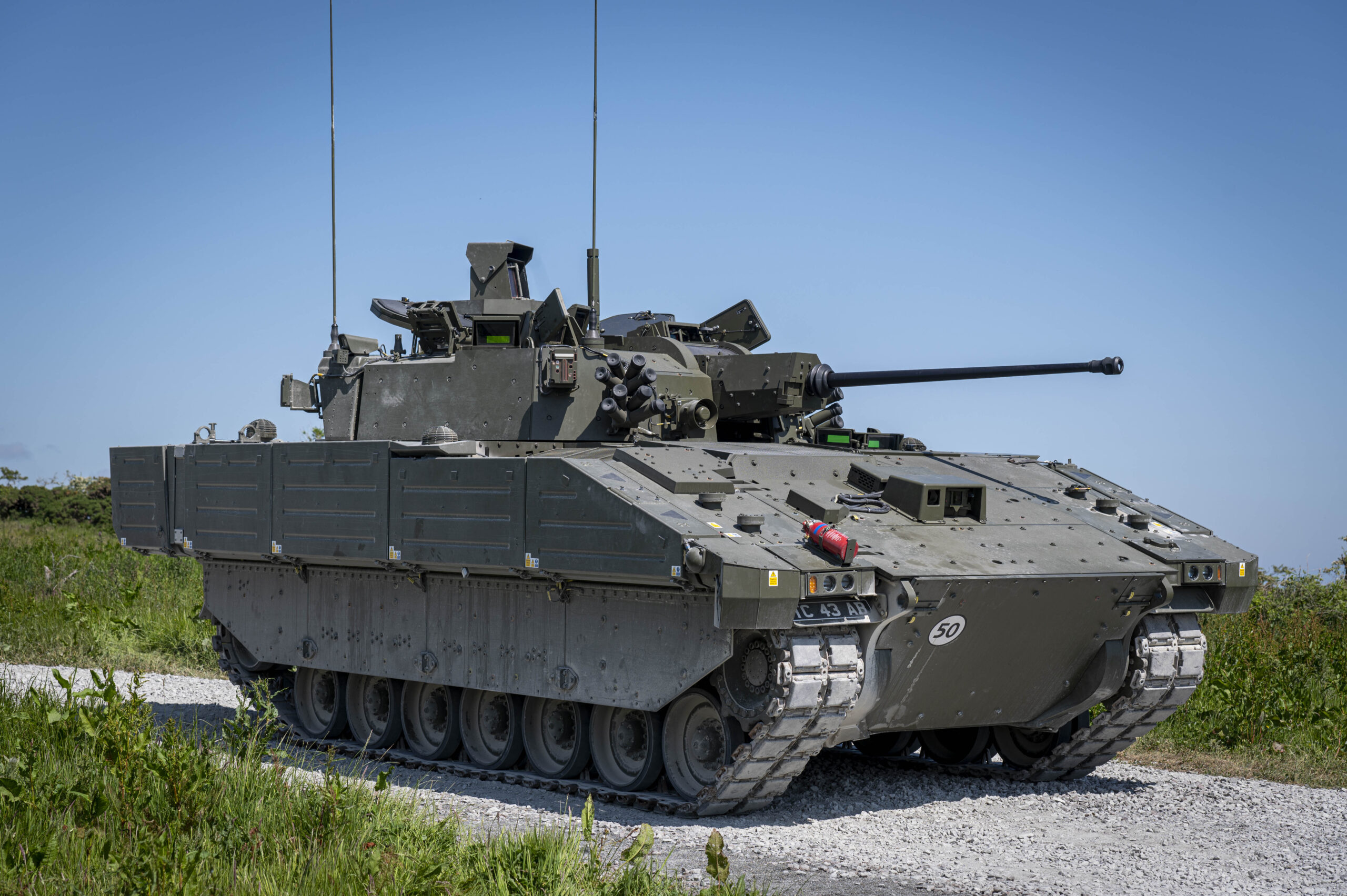
Credit: Crown Copyright
The 589 Ajax AFVs are divided into what became seven variants: 245 turreted reconnaissance, surveillance and joint fire control vehicles armed with the CT40 40 mm automatic cannon and 7.62 mm coaxial machine gun (with these three types known as Ajax variants); 93 Ares armoured personnel carrier/formation reconnaissance overwatch variants; 112 Athena command-and-control variants; 51 Argus engineer reconnaissance variants; 38 Atlas armoured recovery vehicles; and 50 Apollo repair vehicles. All non-turreted Ajax variants will have a remote weapon station (RWS) capable of mounting a 7.62 mm or 12.7 mm machine gun or a 40 mm grenade launcher.
A key attribute of the Ajax reconnaissance variants will be an advanced all-weather intelligence, surveillance, target acquisition and recognition (ISTAR) sensor suite, including primary and secondary sighting systems provided by Thales UK; the primary sight can be replaced by an RWS where the operation dictates. Ajax’s open digital architecture, meanwhile, will mean it has the capacity to evolve through the integration of emerging technologies.
In June 2021, as Ajax development progressed, it emerged that issues with excessive vibration and noise had led to trials of Ajax variants being halted from November 2020 to March 2021. A statement by the UK National Audit Office in March 2022 referred to 136 issues with the Ajax programme and noted that the UK MoD’s original capability requirements for Ajax were highly specified, “making Ajax more complex than other armoured vehicles”.
GDUK has studiously kept its own counsel with regard to the issues with Ajax. Although many of the issues identified with the vehicle could be put down to the usual developmental challenges encountered with producing a new AFV, ESD understands that the numerous additional requirements requested from the UK MoD did not help the situation.
However, following a 22 February 2023 visit by then UK defence secretary Ben Wallace to Bovington Camp in Dorset, where he was shown an Ajax vehicle being put through its paces, Wallace said of the programme, “We think the remedies are in place, we are now going through the normal trials. … I am confident we have turned the corner on this troubled programme.”
Wallace added at the time that the aim was for Ajax vehicles to be active in military units soon after the test programme is completed in about 16 months (then circa July 2024). Full operating capability (FOC) for the Ajax vehicles is slated to be achieved between October 2028 and September 2029, according to an MoD statement in March 2023.
Boxer
Boxer’s selection to fulfil the British Army’s Mechanised Infantry Vehicle (MIV) requirement is effectively third time lucky in terms of this vehicle entering British Army service.
The UK had initially agreed to join France and Germany in jointly developing a Multi-Role Armoured Vehicle (MRAV) in 1996. However, France left the programme in 1999 to pursue its own VBCI programme, the Netherlands joined the programme in February 2001, and then the UK MoD announced it would withdraw from the programme in July 2003 to focus on FRES.
Boxer then made a brief appearance for the FRES ‘Trials of Truth’ in mid-2007 before again disappearing from the scene. In September 2015, however, General Sir Nick Carter, the British Army’s Chief of the General Staff, announced at the DSEI defence exhibition in London that the army was back in the market for an armoured 8×8. This Mechanised Infantry Vehicle, the general said, would operate alongside the Scout SV (renamed Ajax at that year’s DSEI) in the British Army’s future medium-weight Strike Brigades.

Credit: Crown Copyright
The UK MoD announced that it was rejoining the Boxer programme in March 2018, indicating that, having considered other 8×8 options, it had selected the Boxer to fulfil its MIV requirement rather than run another lengthy competition.
Meanwhile, Rheinmetall and KMW, as the partners of the Artec consortium, arranged for their UK-based subsidiaries, RBSL in Telford and WFEL in Stockport respectively, to take up Boxer production after the initial tranche of vehicles was delivered from Germany.
In November 2019 the UK MoD initially ordered 523 Boxers in four variants: infantry carrier, specialist carrier, command post vehicle and ambulance, with the latter having a raised roof to afford greater internal volume. In April 2022, however, the UK added a further 100 Boxers to its order for a total of 623 vehicles.
While the first 117 UK Boxers are being manufactured in Germany, UK production by RBSL and WFEL began in early 2023. Boxers bound for the British Army will be the latest A3 variants, which weigh 41 tonnes and feature an uprated MTU 8V 199 TE21 powerpack delivering 600 kW (804.6 hp): an improvement of 90 kW (120.7 hp) compared to previous variants of the vehicle.
Although the army will be receiving its Boxers as its fleet of Warrior IFVs go out of service from around 2025, the Warrior Capability Sustainment Programme having been cancelled in 2021, the two vehicles are not directly analogous. As well as being tracked, for example, the Warrior IFV is armed with a 30 mm RARDEN cannon, while the UK Boxers will feature a Thales UK-supplied Protector RS4 remote weapon station (RWS) armed with a 12.7 mm heavy machine gun. Thales UK’s GBP180 million subcontract for the RWSs also includes provision of the Acusonic shot detection system.
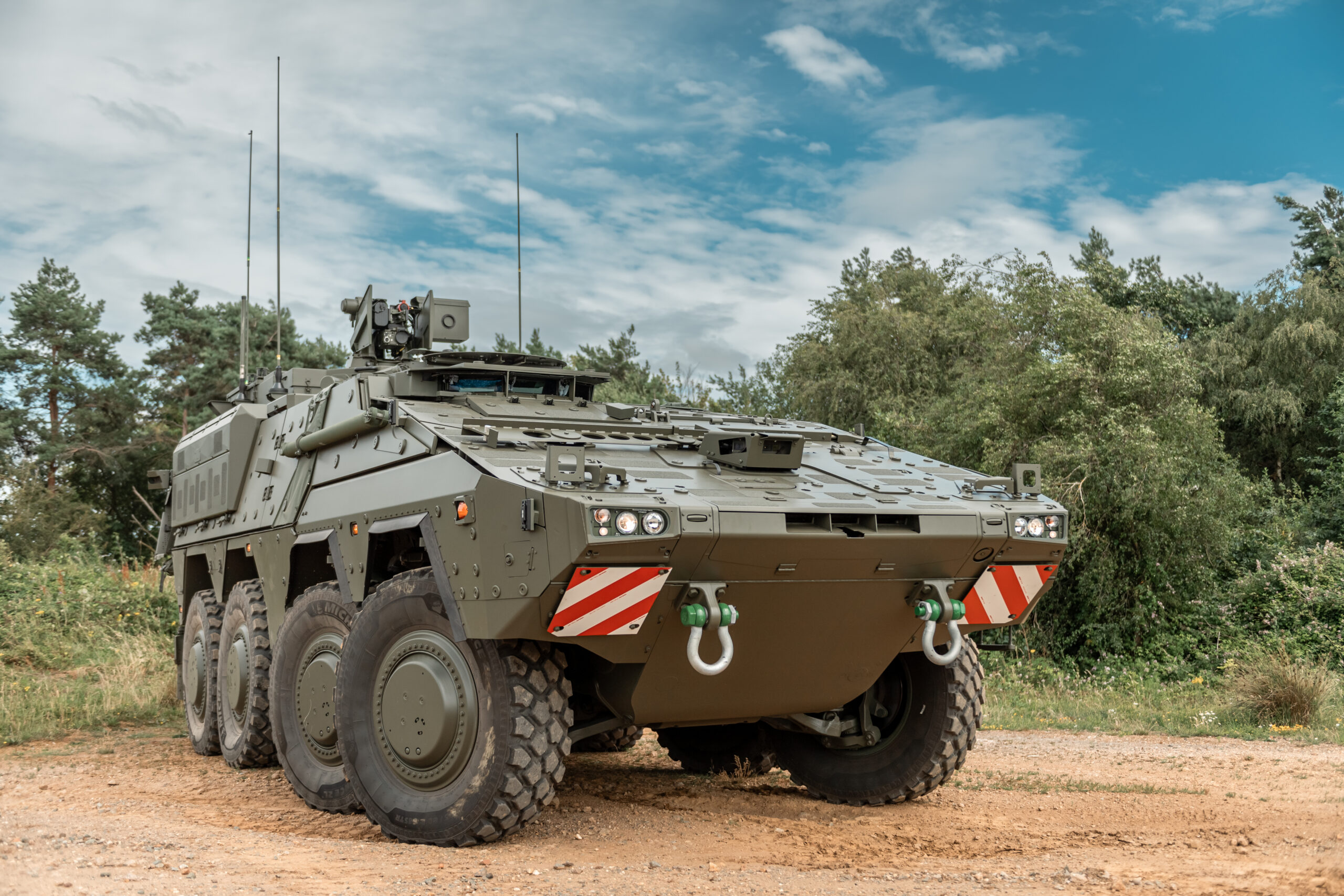
Credit: Crown Copyright
Boxer is thus not a direct replacement for Warrior, the IFV role of which is to deliver infantry mass onto or as close as physically possible to an enemy objective, while also possessing the weaponry to provide meaningful direct fire support.
One key feature of Boxer, not previously possessed in a British Army AFV, is that it is truly modular in nature; the vehicle’s common drive platform can accept various interchangeable mission modules on its rear according to operational requirements. This means, for example, that an infantry carrier variant can be transformed with an hour under field conditions into any one of a number of different variants. Time will tell whether, beyond its initial procurement, the British Army – and indeed the other current and future Boxer users (Australia, Germany, Lithuania, the Netherlands and Ukraine) – can make full use of this novel capability.
Some sources have suggested that Artec, in facilitating so many permutations of Boxer, is building up logistical issues that will complicate the fielding of the vehicle. Artec executives have responded that, instead, they are more closely delivering precisely what their clients have asked for.
UK Boxer MIVs began industry trials at the UK’s Milbrook Proving Ground in July 2023 and are expected to enter service from 2025.
Challenger 3
Unlike Ajax and Boxer, the Challenger 3 MBT is a direct upgrade of its predecessor, the in-service Challenger 2, with the programme previously starting as the Challenger 2 Life Extension Programme. The UK MoD awarded RBSL a GBP 800 million contract on 7 May 2021 to upgrade 148 Challenger 2s to the Challenger 3 configuration. On paper the British Army’s Challenger 2 fleet stood at 227 tanks, but in March 2023 it was disclosed that only 157 Challenger 2s were available for operations, with the remainder having been cannibalised to support the rest of the fleet, while in January 2023 the UK government declared that it would send 14 Challenger 2s from the operational fleet to Ukraine. It can therefore be assumed that a number of Challenger 2s that are not operational will ultimately be used for the Challenger 3 upgrade programme.
Most notable among the Challenger 3’s upgrades is the replacement of the Challenger 2’s rifled 120 mm L30A1 main gun, which uses two-piece ammunition (sometimes referred to as three-piece ammunitions – somewhat erroneously since the vent tube is typically considered a part of the firing mechanism rather than the round itself), with Rheinmetall’s 120 mm L55A1 smoothbore weapon, which uses one-piece ammunition. This gun, which will be housed in an all-new turret, will bring significant ammunition commonality with many UK allies operating the German Leopard 2 MBT.
As the senior army source noted to ESD, “Over 20 nations, including all of the UK’s principal NATO allies, currently use 120 mm smoothbore guns, so we will have greatly improved interoperability with our allies.
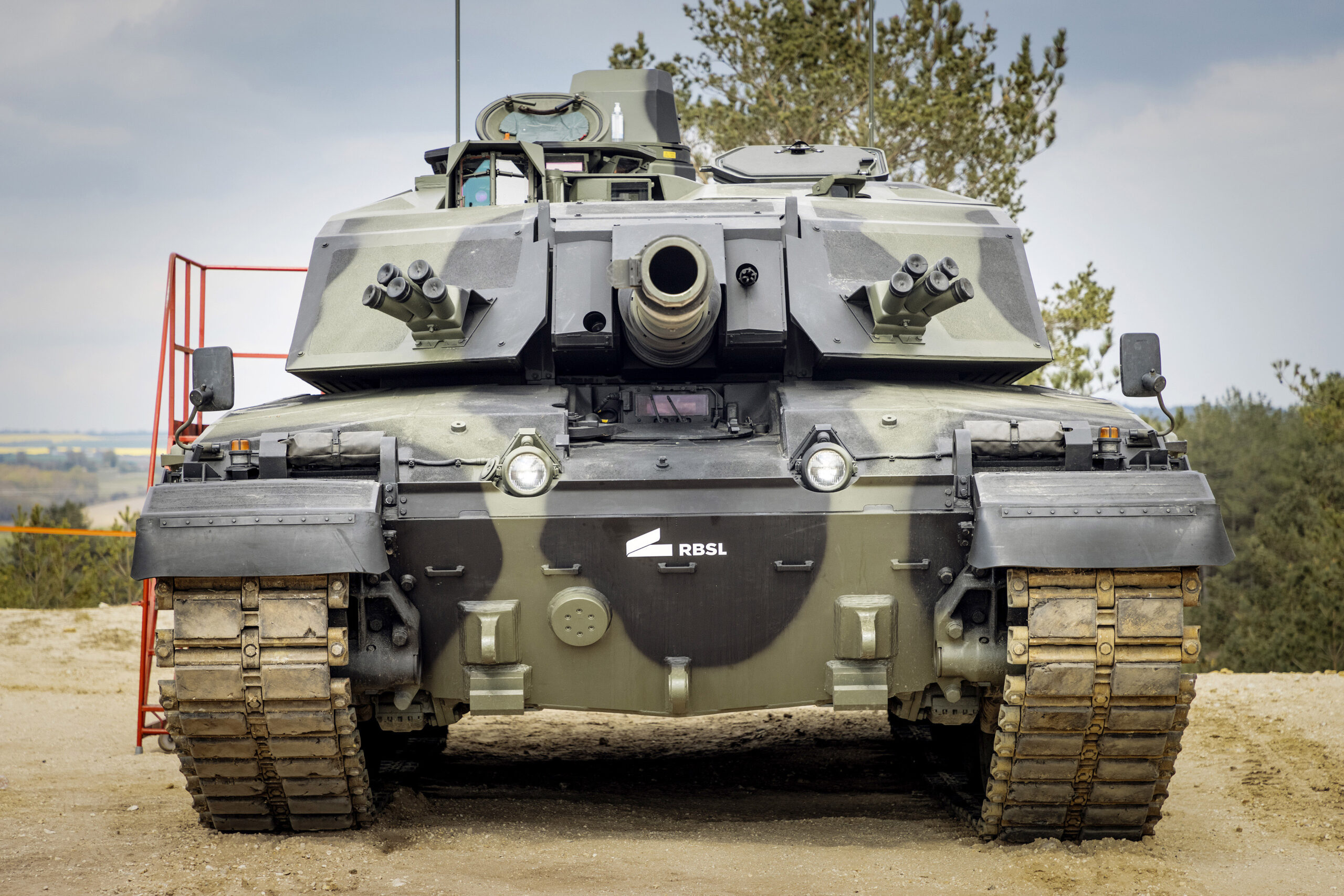
Credit: Crown Copyright
“The new ammunition natures for CR3 are more capable than the existing ones and will make our tanks more lethal,” the army source added. “The new Enhanced Kinetic Energy (EKE) ammunition and multi-purpose round with point impact, delayed detonation and air-burst capability will be more lethal and flexible in use than their predecessors.”
On 27 April 2023 DE&S announced that Germany and the UK will work together on the next phase of development for advanced armour-piercing tank ammunition for the Challenger 3 and Leopard 2 MBTs.
The Challenger 3 will also have new sighting systems to replace the Challenger 2’s single thermal imager: two independent thermal imagers for the commander and gunner, an automatic target tracking system with wide-area search and assisted-target-detection capabilities, and a new driver’s sight with front and rear thermal imaging cameras.
Regarding protection the Challenger will feature advanced armour, a laser warning system and the Trophy active protection system (APS). Trophy’s Israeli manufacturer, Rafael Advanced Defense Systems, was awarded a GBP 20 million contract in July 2023 for long-lead items as the programme moves to the demonstration phase in 2024, having completed assessment phase trials on a Challenger 3-representative platform.
“The Trophy APS is a big leap in the survivability of our vehicles,” said the army source. “The system has been repeatedly proven to be effective against the rapidly proliferating threat of anti-armour weapons, which are a ubiquitous presence on the modern battlefield.”
The Challenger 3 will also feature an open-system vehicle architecture compared to the Challenger 2’s closed vehicle architecture, along with new digital crew stations.
Mobility-wise the tank will feature third-generation hydro-pneumatic suspension system to replace the Challenger 2’s second-generation hydro-pneumatic suspension, certain upgrades to the engine with improved cooling, and is expected to have a reduced through-life cost as a result of these improvements. So far, however, no significant upgrading of the tank’s powerpack is planned or likely, since this is not funded and presents a considerable technical challenge to retrofit.
All of the Challenger 3’s upgrades are expected to come with a weight penalty of around one tonne, according to RBSL literature, raising the tank’s weight to 66 tonnes, although this is not thought to include the weight of adding the Trophy system and an ‘operationalised’ tank is likely to weigh more through add-ons, such as an appliqué armour package.

Credit: RBSL
In February 2023 the UK MoD announced it had approved the critical design review (CDR) for the Challenger 3 ahead of schedule. The first Challenger 3 prototypes are likely to be delivered to the British Army in early 2024.
Future Soldier, future tactics
The UK’s nascent armour tactics will fit within the Future Soldier plans to combine reconnaissance and long-range precision strike and, as put in the summer 2023 edition of The British Army Review, lead to the “removal of the formation boundary between sensor-decider-effector” to effect the army’s “first multi-domain recce-strike complex”. This construct, as evidenced by the British Army forming the 1st Deep Recce Strike BCT in July 2022, is focused on “exploiting greater ranges and integrating capabilities from multiple domains to converge effect against the enemy with superior tempo and in ever greater depth”.
Viewed in this context, it can be seen how Ajax – which is a 42-tonne vehicle compared to the eight-tonne Scimitar CVR(T) variant – is a central component of the army’s Future Soldier concept. As the army source told ESD, “The central Ajax platform is both a sophisticated sensor and a highly lethal effector in one package. The vehicle can operate in all weathers, 24 hours a day, providing an ISTAR capability that significantly improves the ability to take decisive action. Ajax’s lethality, survivability and integral sensors are exponentially enhanced by its ability to connect cross-domain and with other army platforms, in which capacity it will be a net contributor to the multi-domain enterprise.”
Regarding Boxer, the army source told ESD that, as an infantry carrying – rather than fighting – vehicle, its role “is to rapidly transport infantry soldiers, at reach, to and around the battlefield, enabling them to conduct a range of dismounted infantry tasks, such as patrols, clearing complex terrain, raids or to occupy defensive positions”.
The Challenger 3 will naturally retain its MBT role as the UK’s ultimate beast of the battlefield, while being more lethal, more protected, though not necessarily more mobile, than its predecessor.
Meanwhile, an upgrade to the army’s Warrior IFV fleet announced on November 2023, involving the installation of a rear safety camera on 359 vehicles, indicated that the Warrior fleet will see extended service beyond its previously-scheduled retirement in 2025.

Credit: Crown Copyright
Regarding this the army source told ESD, “An appropriate number of Warrior AFVs will remain in service until new concepts and capabilities are introduced into service throughout the decade, ensuring operational requirements continue to be met. We will not provide information on the number of Warrior platforms that will remain available for operational deployments, as its disclosure would, or would be likely to, prejudice the capability, effectiveness, or security of the armed forces.”
The source added that Warrior “will leave service this decade and the first Boxer vehicles will enter initial service from 2025. There are no plans to extend Warrior to 2030.”
A new horizon
So yet another new dawn beckons for the UK’s armoured formations, yet inevitably the vagaries of military geopolitics are not done with complicating matters and the lessons from the War in Ukraine, where significant types of medium and heavy armour have been deployed, will need to be accommodated.
The senior army spokesperson told ESD, “The conflict in Ukraine has provided a generational opportunity for us to test and adjust our understanding and approach to current and future war. Lessons from the battlefield have highlighted that data and lethality are central to modern warfare, but it has also shown that attrition remains a constant in the land domain.”
With respect to key principles driving the Army’s approach, the spokesperson concluded, “Modern warfare demands combat credibility and scale in warfighting forces, as well as the ability to rapidly generate sufficient capacity in both people and equipment to continue the fight. These remain core elements of both our approach to modernisation and the Future Soldier plan.”
Peter Felstead





